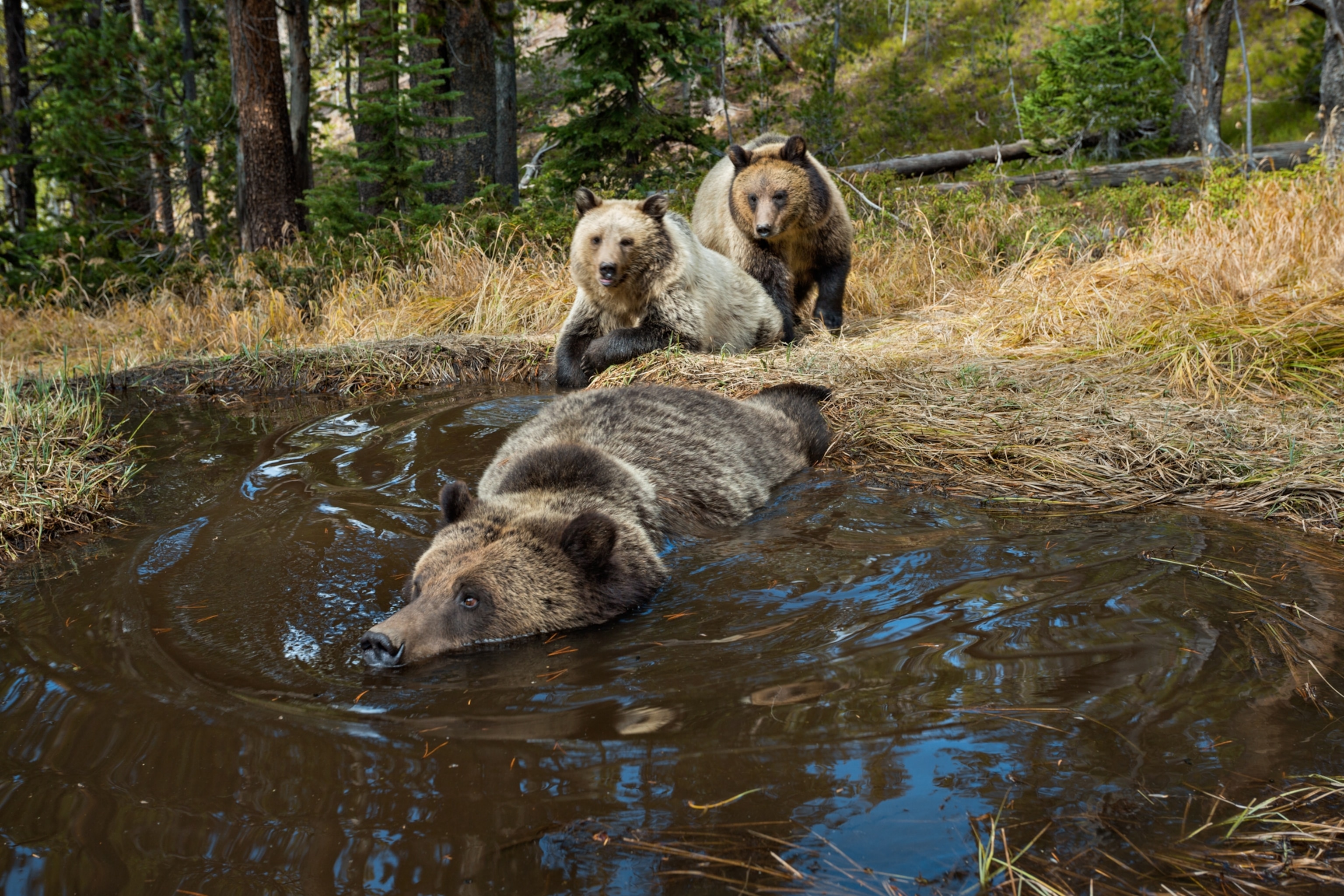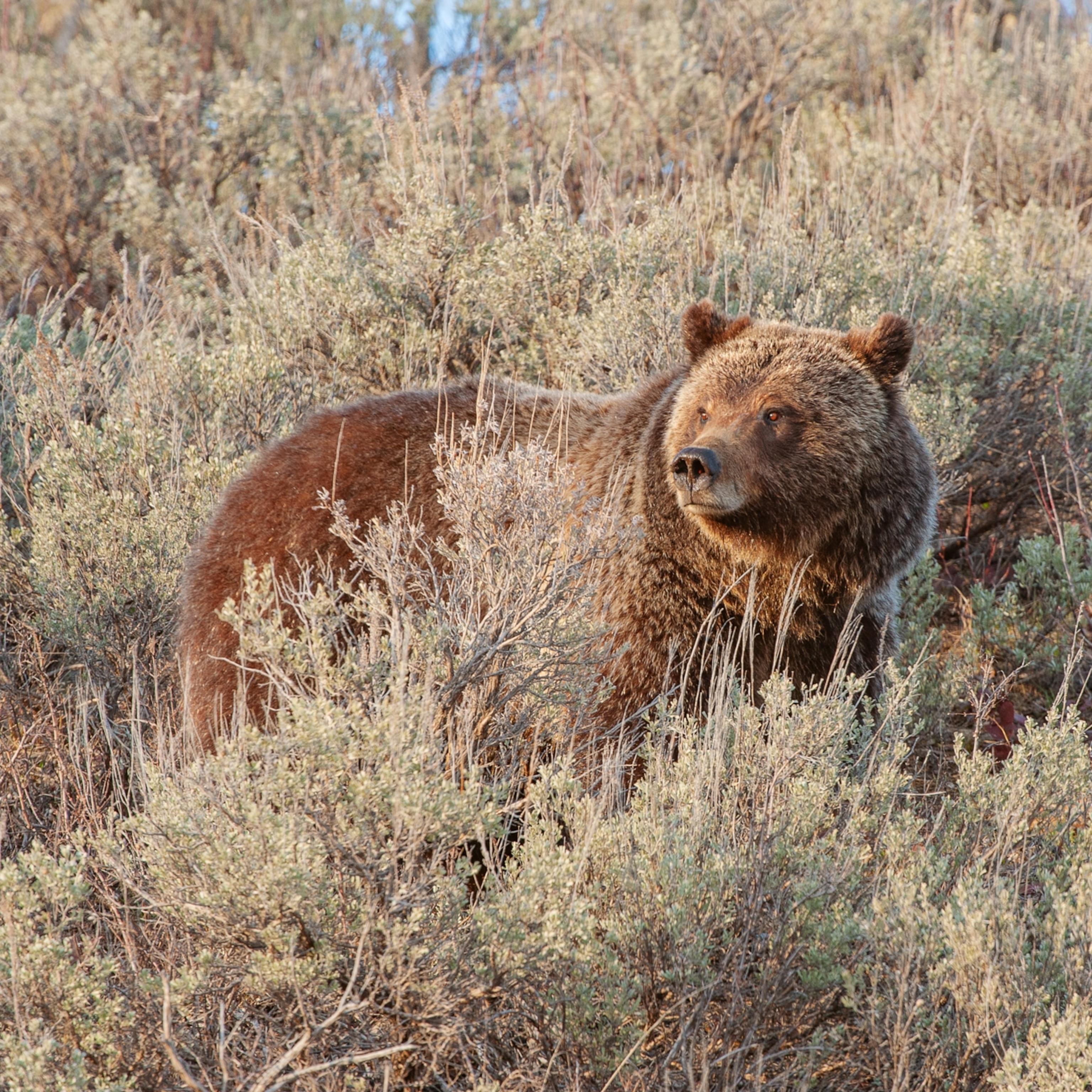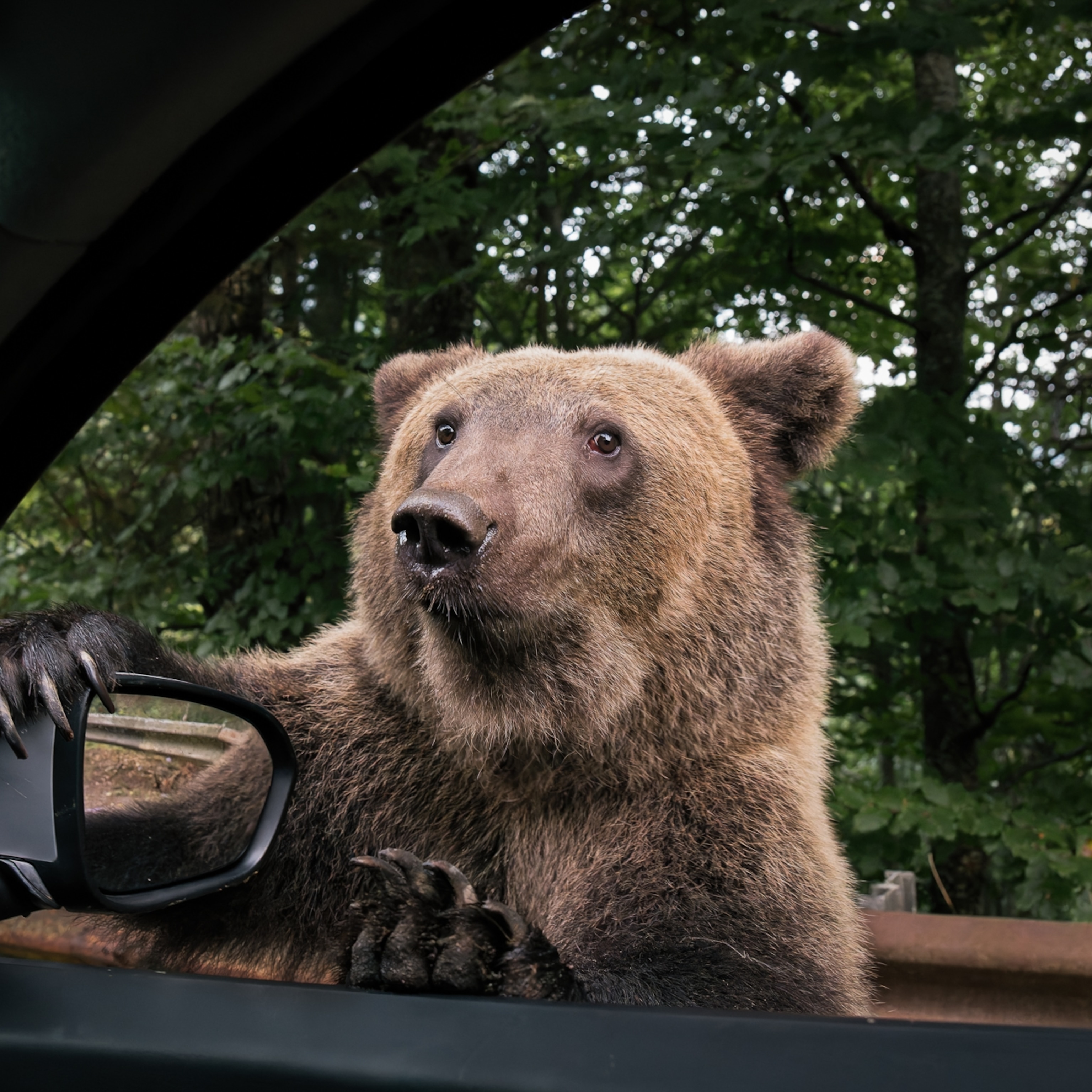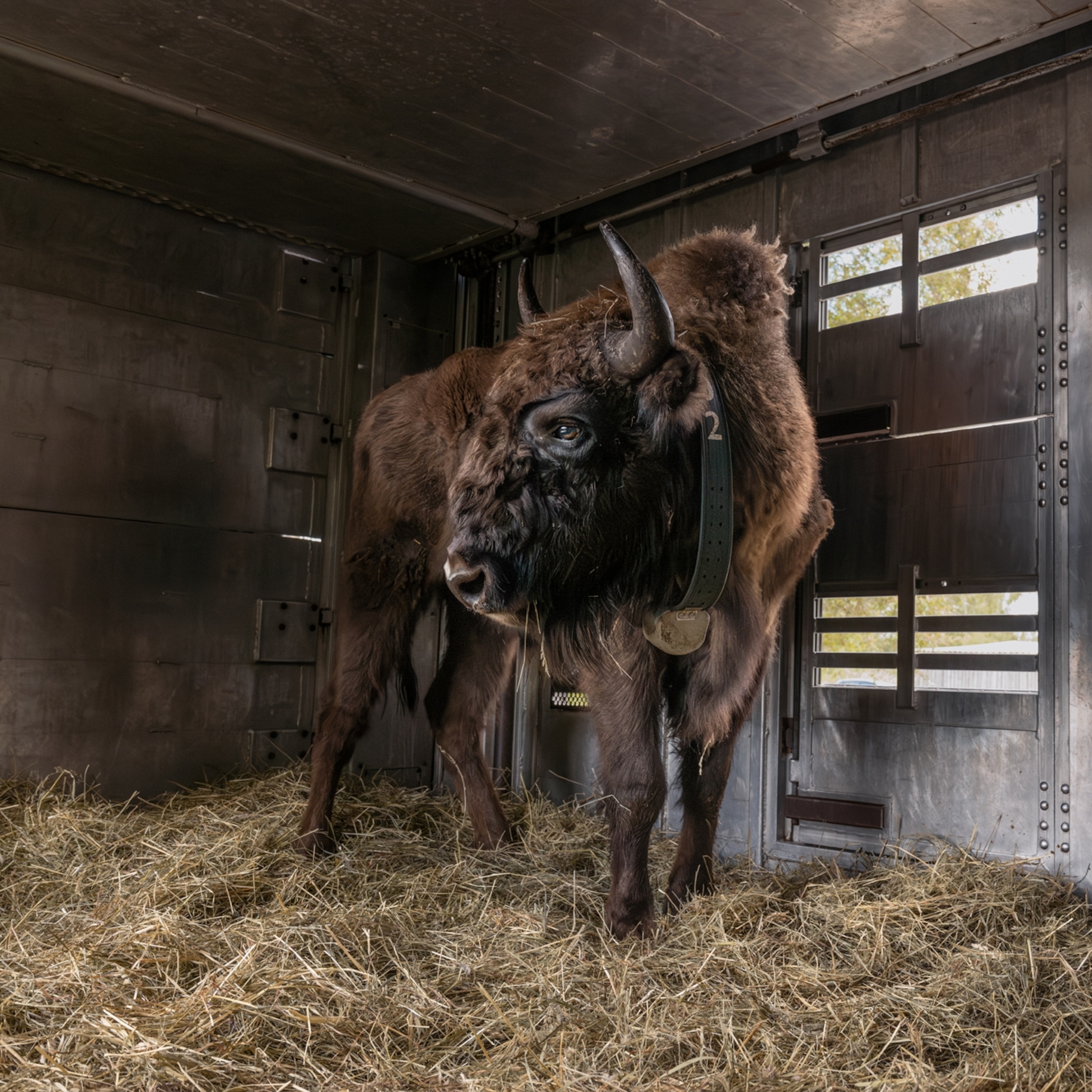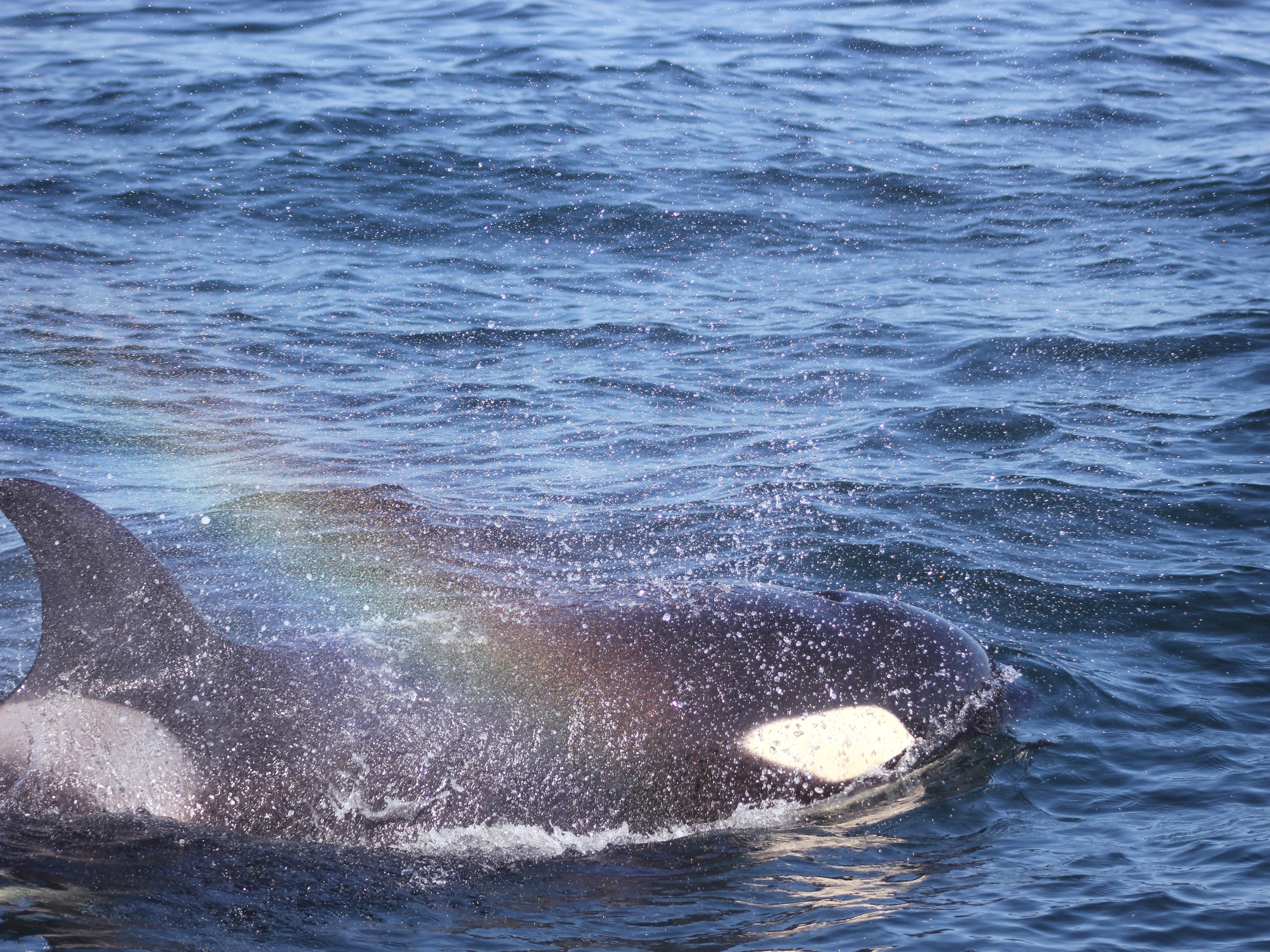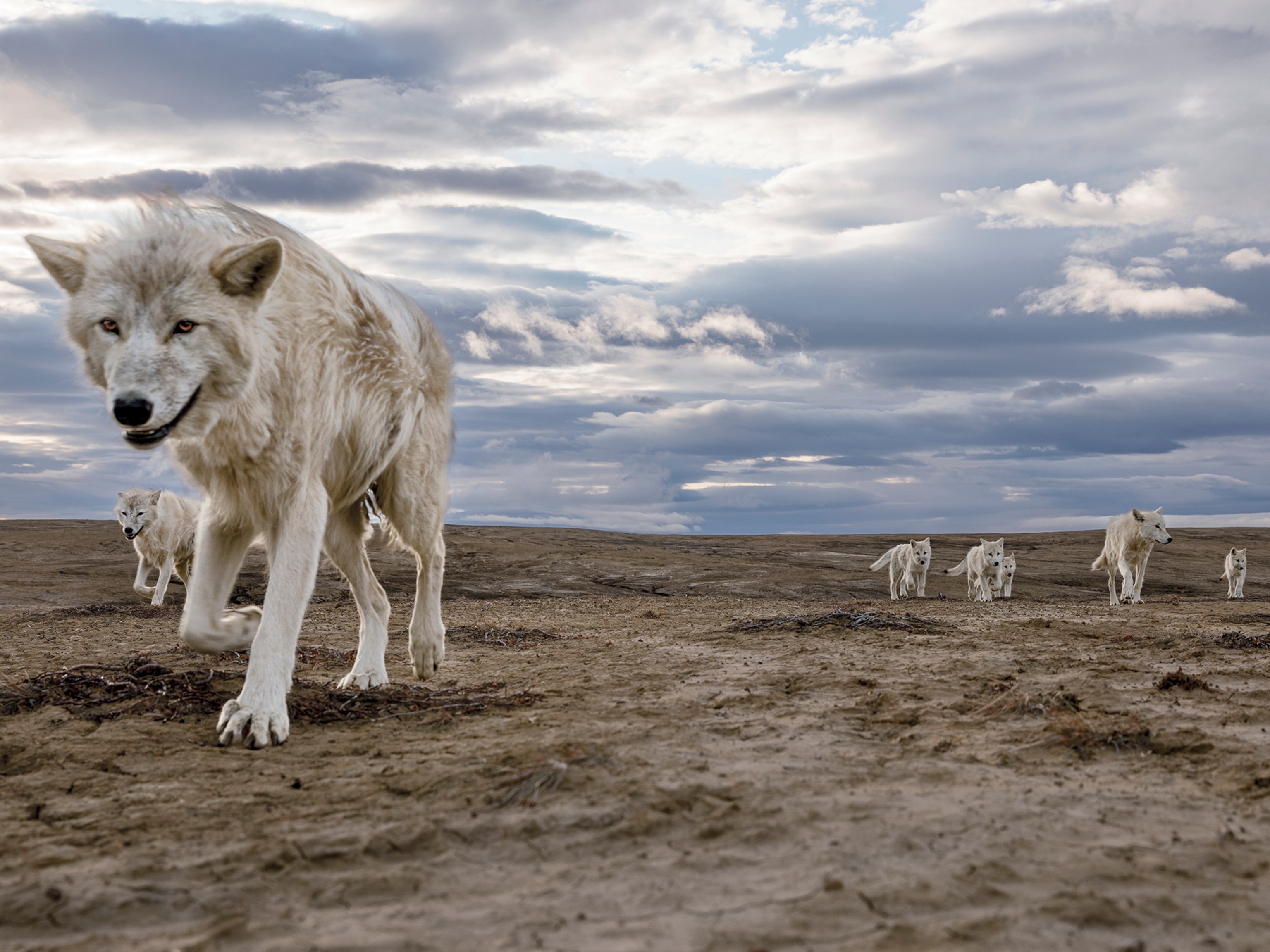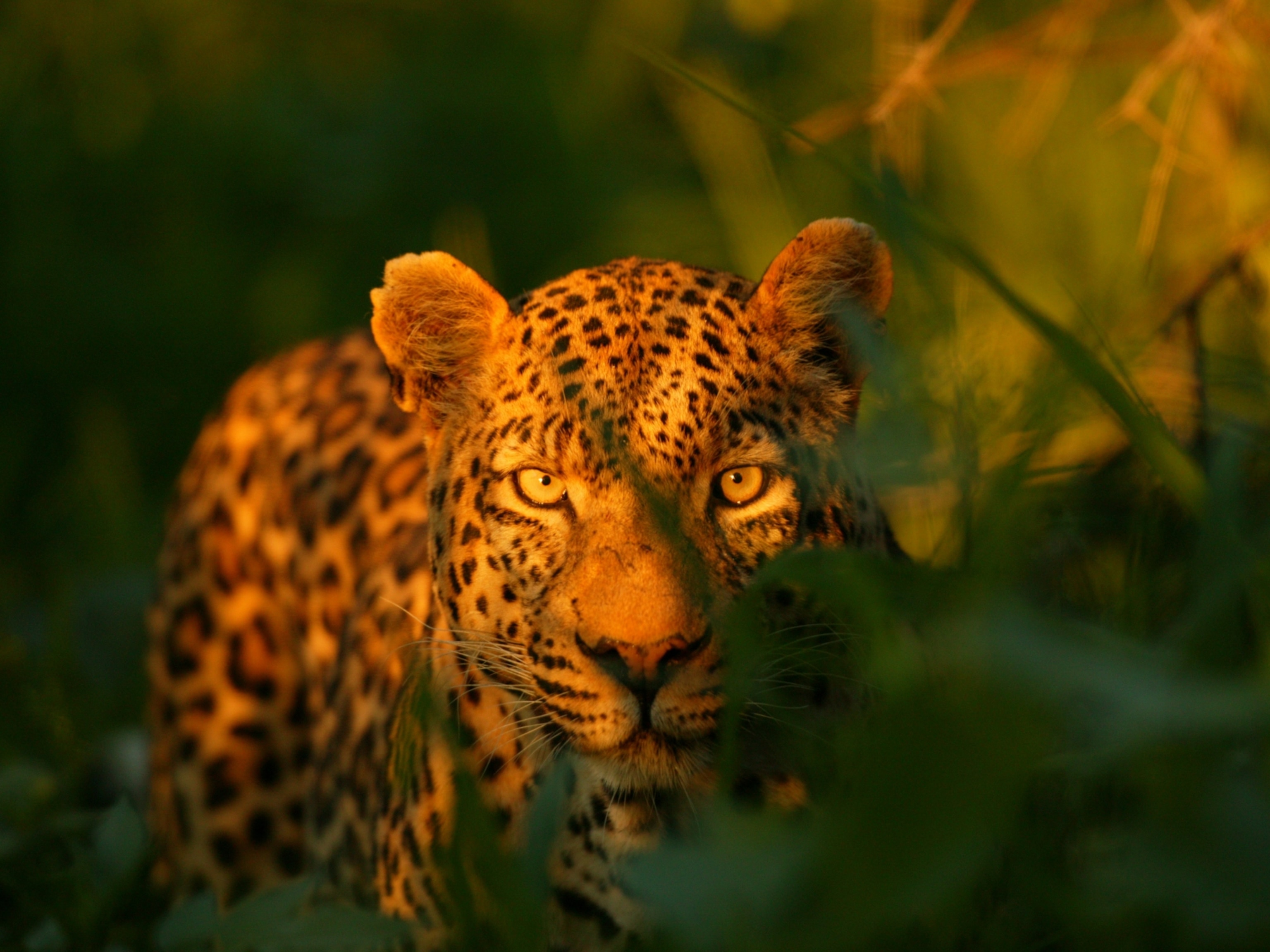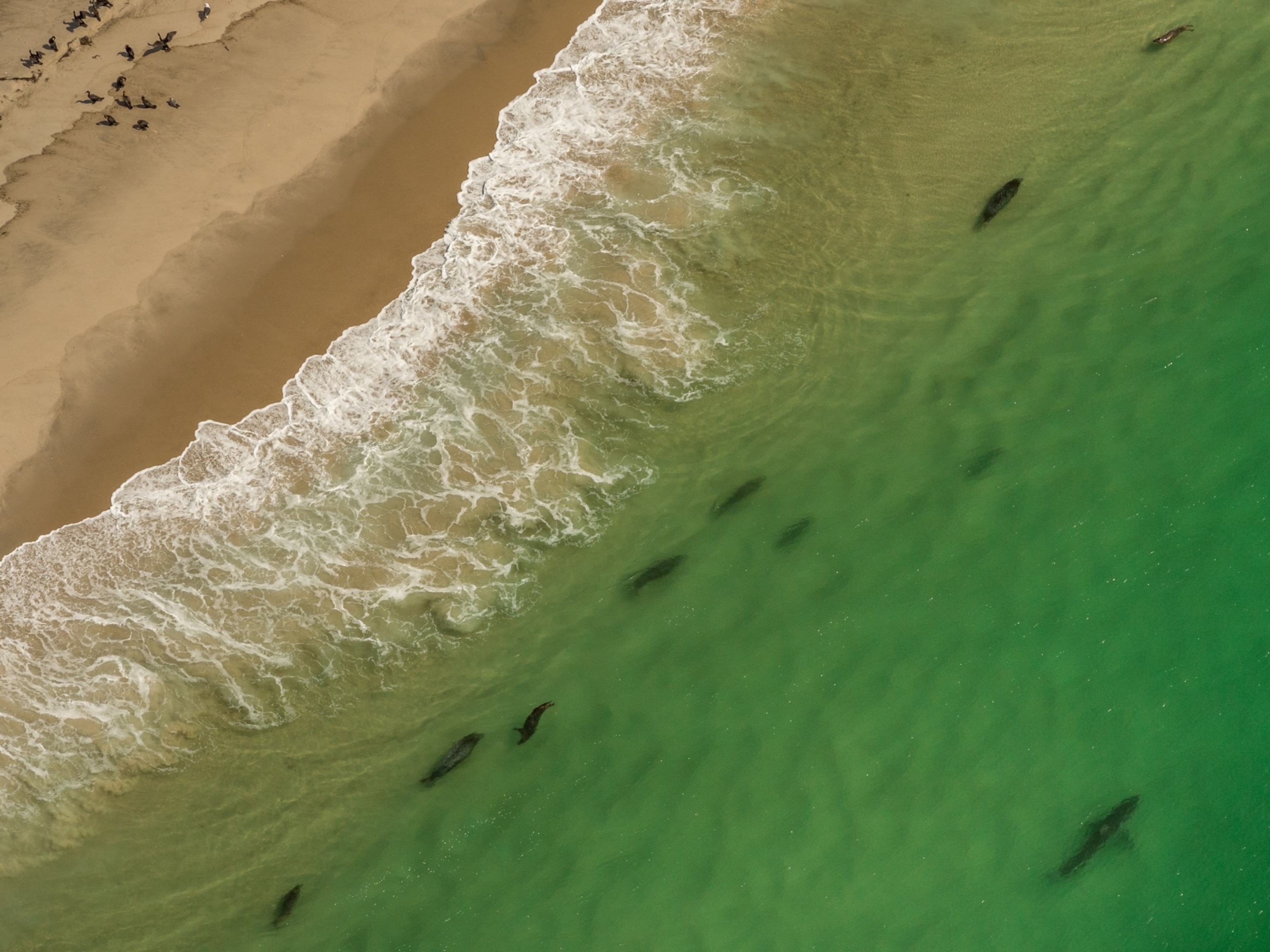Missoula, Montana — Kyler Alm froze. A branch snapped. Something was in the forest behind him. Alm, a 19-year-old hunter with a permit for a bull elk, nocked an arrow in his bow and waited. The tawny fur of a moving animal appeared through the trees, but something wasn’t right. Alm, who’d come alone into the woods, didn’t see antlers.
A moment later, the young hunter, two miles from his truck in the foothills of the Bitterroot Mountains of western Montana, came face to face with the largest bear he’d ever seen. Unlike the black bears that frequent the woods here, this one didn’t run. Because everyone knows grizzlies don’t live here—they haven’t inhabited the Bitterroots in 70 years—Alm did not have bear spray.
The young man’s eyes met the bear’s. The large bruin with a telltale silvery stripe behind its shoulder, common on grizzlies, held Alm’s stare.
“Hey bear, hey bear,” Alm called out tremulously. The bear huffed and stood its ground. Alm yelled as loudly as his lungs allowed. Still the bear stared.
Fearing a charge, Alm aimed his nine-millimeter pistol at the ground in front of the bear and fired three shots. The animal retreated a few yards, stopped, and again turned to face the young man, huffing repeatedly. Alm backed up. But the ground was slick from rain, and he slipped and fell backward. That’s when he heard enormous paws crashing across the ground.
“I thought for sure the bear was coming at me,” Alm says.
To his great fortune it wasn’t. Alm leapt to his feet and saw the back of the animal lope away into the forest.
“I don’t think I’ve ever gotten out of the mountains that fast,” Alm says about the retreat to his truck.
Four days later, a motion-activated camera in the Bitterroot foothills captured a grizzly helping itself to the fruit of an apple tree in a rural yard. The two incidents splashed across newspapers in Missoula, the nearby city of 80,000, where residents aren’t accustomed to grizzly bears in the hills around town.
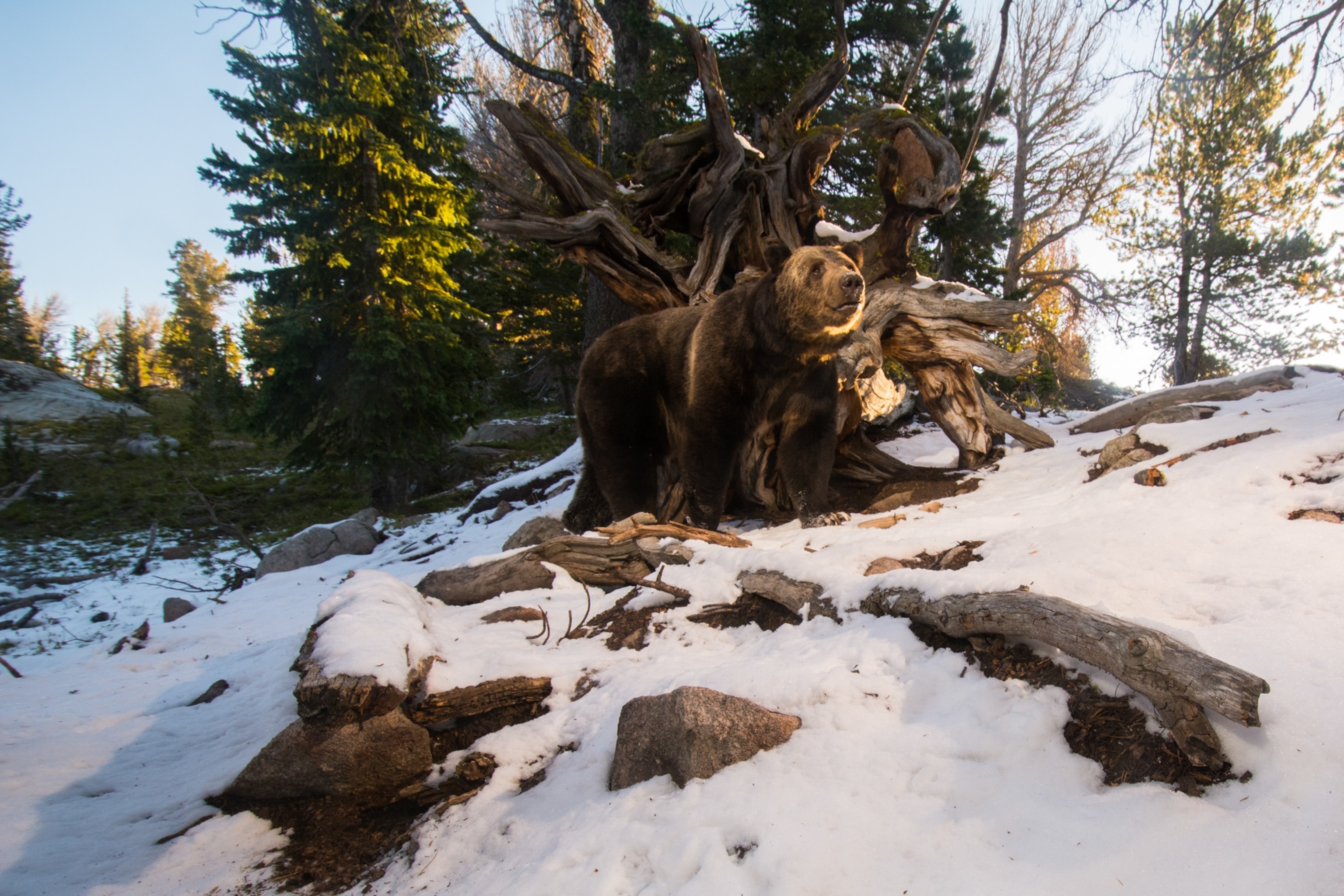
“Right now people have kind of a false security,” Montana game warden Justin Singleterry, who investigated Alm’s bear encounter, told the Missoulian in October.
“Grizzly bears are re-occupying significant areas of their [former] range,” says veteran bear biologist Chris Servheen of the steadily increasing grizzly populations in the Northern Rockies. “So don't expect that just because you’re outside [Glacier] or Yellowstone that you’re not going to see a grizzly bear.” Servheen recently retired from the U.S. Fish and Wildlife Service, where he oversaw grizzly management in America for 35 years, and he insists people and bears can get along—if people take proper precautions.
As grizzly bears expand their range in Montana, Idaho, and Wyoming into places where they haven’t been seen in a century or more, they’re increasingly encountering humans. Things intensified last summer as trails and campgrounds across the region flooded with inexperienced tourists seeking refuge in the outdoors during the coronavirus pandemic. Grizzly attacks spiked. Bear managers were inundated with calls about grizzlies getting into garbage, chickens, and other draws. Dispersing grizzlies even came unexpectedly close to neighboring states—a remote camera in Wyoming captured a grizzly only 20 miles from the Utah border and a radio collared bear in Idaho nearly roamed into Oregon and Washington. Ultimately, 2020 offered a nerve-jangling look at the challenges and complex future of grizzly bears in America.
How many bears are enough?
Grizzly bears occupy a conflicted, toothy corner of the American psyche—we revere them even as they haunt our nightmares. You can buy food at Grizzly Grocery before climbing Grizzly Peak or hiking Grizzly Gulch. You can have your furnace serviced by Grizzly Plumbing and Heating. Here in the Northern Rockies, and everywhere grizzlies are found, people erect statues of them, frame pictures on their walls, and, if they see a grizzly in the wild, tell breathless stories around campfires and dinner tables for the rest of their lives. Ask the tourists from around the world that flood into Yellowstone and Glacier National Parks what they most hope to see, and their answer is often the same: a grizzly bear.
The western half of the U.S. teemed with grizzlies at the time of European contact, with an estimated 50,000 or more living alongside Native Americans, from the Pacific to the midwestern prairies and into the mountains of Mexico. By the early 1970s, after centuries of relentless shooting, trapping, and poisoning by settlers, 600 to 800 grizzlies remained on a mere 2 percent of their former range in the alpine fastness of the Northern Rockies. Their slide into oblivion was stemmed in 1975 with their listing under the Endangered Species Act and the legal protections it afforded.
Fatal attacks on humans are rare—on average one encounter every three years in the Lower 48. Far more common is people killing bears—by illegally shooting them, striking them in vehicles, or inadvertently feeding them.
Today, in a testament to the power of wildlife populations to rebound when given room to do so, there are an estimated 2,000 or more grizzly bears in the contiguous U.S. (and approximately 25,000 in Canada and 30,000 in Alaska). Their recovery has been so successful that the U.S. Fish and Wildlife Service has twice in the past 13 years attempted to de-list the species, most recently in 2017, which would loosen legal protections and allow them to be hunted. Both efforts were overturned in federal court due to lawsuits from conservation groups. For now, grizzlies remain listed.
In the lower 48, grizzlies are anchored by two populations in Glacier and Yellowstone National Parks and surrounding ecosystems. Glacier bears represent the southern edge of the great, uninterrupted mass of grizzlies that inhabit wildlands from Montana to Alaska.

Yellowstone grizzlies, by contrast, have survived on a genetic island, geographically isolated from this larger population, like the dot at the bottom of an exclamation point. Genetic isolation leaves bears vulnerable to inbreeding, disease, climate-induced habitat changes, and other existential threats. It was the Yellowstone subpopulation of grizzlies that the Fish and Wildlife Service tried to delist first (Glacier grizzlies were to follow), but their effort was overturned largely due to their lack of connectivity.
For grizzlies to survive in America, we need more bears in more places. The question is, will people allow it?
Keeping bears out of trouble
The challenge of roaming grizzly bears is not one of space—there’s ample habitat, whether it be in Montana, Wyoming, or even Colorado or California (where conservation groups have called for reintroduction)—but rather around what biologists call “social acceptance.”
In other words, some people just don’t like grizzly bears, which can make life more complicated for people that live near them. If precautions aren’t taken, grizzlies can become a nuisance, occasionally killing livestock or rummaging through yards for food—which may lead to preemptive strikes on the grizzlies themselves. On November 9, a pair of illegally shot grizzlies was found dumped near Bigfork, Montana, on, of all places, Bear Creek Road. Eleven days later, another dead grizzly was found with its legs cut off in the nearby Yaak Valley.
Despite such animosity, fatal attacks on humans are rare. On average, there is one fatal encounter every three years in the lower 48. Far more common is people killing bears—by illegally shooting them, striking them in vehicles, or inadvertently feeding them.
Every year dozens of grizzly bears are euthanized by wildlife managers across the region after they become dangerously conditioned to what biologists call “attractants”—chickens, compost piles, bird seed, and other food sources—left out by homeowners. Bears are quick learners, and once they taste the easy rewards of human-supplied food at homes or campsites, they’ll invariably seek out more, guided by their powerful sense of smell. Grizzlies have been documented detecting the scent of an animal carcass over 10 miles away.
Once grizzlies become food-conditioned, bear managers typically capture them in large, metal traps shaped like airplane fuselages and baited with the legs of deer roadkill. Then, for human safety, they euthanize them. Thus the saying, “A fed bear is a dead bear.”
Consider the pair of grizzlies, a young brother and sister, in West Yellowstone, Montana, that this summer repeatedly fed on trash and dog food left unsecured outside homes. They were eventually trapped and euthanized on September 1 after nosing into an occupied camping tent.
Bear managers were inundated with calls about grizzlies. Ultimately, 2020 offered a nerve-jangling look at the challenges and complex future of grizzly bears in America.
If people remove food and other odiferous attractants from their properties and campsites, grizzlies will typically pass by without trouble. Installing electric fencing around chicken coops and other domestic animal quarters is also highly effective at repelling grizzlies, which typically only need to be shocked once to stay away forever.
“The ideal is to have a clean, attractant-free landscape where bears can pass through [developed areas] without learning bad habits,” says James Jonkel, longtime biologist for Montana Fish, Wildlife, and Parks who manages bears in and around Missoula.
Recent studies of radio-collared bears in Montana’s Swan Valley surprised biologists by illustrating the ability of grizzlies to live among and move through populated rural areas unnoticed. In other words, when people tolerate their presence, grizzlies peacefully follow suit—as long as attractants don’t lead them to trouble.

The COVID-19 effect
Grizzly bears aren’t the only species increasing in number in the Northern Rockies; human populations are also growing. The 200 or so miles that separate the Yellowstone and Glacier ecosystems encompass a fast-growing region of snow-mantled mountains where valleys are thick with cattle ranches, small towns, and the booming small cities of Missoula and Bozeman. Gallatin County, north of Yellowstone, has grown by 30 percent in the past decade, and its commercial hub of Bozeman, population 49,000, is currently the fastest growing “micropolitan” area in the country, with projected 50 percent population growth in the next 20 years. Missoula County and other counties in between are also seeing double-digit growth.
The pandemic has turbocharged this migration, with urbanites relocating to outposts across the region. Stacy Courville, bear biologist for the Confederated Salish and Kootenai Tribes north of Missoula, where the picturesque Mission Valley entrances home buyers, describes the shock on a new resident’s face when she learned that a grizzly bear had recently been trapped near her home, where a small, unprotected apple orchard served as a powerful draw.
“They’re new residents and they didn’t realize they were in bear country,” he says. “I think that’s happening all over.”
Similarly, last summer the region saw an unprecedented crush of inexperienced vacationers who left out food and garbage at campsites and flooded the area’s public lands, with little knowledge of grizzly protocols.
“There was a huge COVID effect [this summer],” says Jeff Mow, superintendent of Glacier National Park, who plans to increase the park’s educational focus on responsible recreation in bear country. “We had a large number of visitors…who didn’t know how to behave with some very basic skills.”
The pandemic summer also saw a record number of physical encounters with grizzlies, which bears see as defensive and we label “attacks.”
Big Sky, Montana, a resort community 25 miles northwest of Yellowstone, saw its first grizzly attack in 23 years on Memorial Day. The second occurred 17 days later, and the third came on September 7. None were fatal, but one nearly was. All caused significant injuries.
According to Megan Robbins, a researcher at the University of Montana who conducted a survey of grizzly attacks, the average number of attacks is usually fewer than six per year in the lower 48. This year there were 13.
Some biologists suspect the pandemic contributed to the rise in grizzly attacks, first by largely removing humans, many of whom were under stay-at-home orders, from bear habitat in the spring, drawing grizzlies into once-popular areas they may have typically avoided, followed by a deluge of recreationists in the summer.
Servheen insists attacks are avoidable, particularly if recreationists and hunters carry and properly use bear spray, which has proven more effective at repelling grizzlies than guns and ultimately leaves the animals unharmed. “People that are paying attention in grizzly bear habitat, and carry bear spray and make noise and are not alone,” he says. “If you do that you can be pretty safe.”
Making the connection
As in Missoula, the residents of Bozeman are used to a life without grizzly bears nearby. When a grizzly was seen on October 17 only five miles outside town, it sent shock waves through the community, whose trails are coursing with mountain bikers, trail runners, and other recreationists, an increasing number recently relocated from urban areas.
Montana state bear biologist Kevin Frey, who oversees the Bozeman region, is concerned about the potential for future conflict. “Folks need to wake up and realize this isn’t Central Park,” he says.
Meanwhile, grizzlies are pushing ever closer to establishing the critical link between Yellowstone and Glacier that will ensure the health of the southern bears—and allow them to be de-listed. Along the border of Montana and Idaho, the Bitterroot Mountains, where Alm encountered that grizzly, could help create a critical link between the two parks. Biologist Jonkel, along with conservation groups like Defenders of Wildlife and People and Carnivores, is working to prepare residents in the Bitterroot Valley for the arrival of grizzlies by teaching them bear-friendly practices. Frey is doing the same in the Big Hole Valley to the south, where grizzlies have also recently appeared.
Their efforts, and those of land managers and biologists who work to keep bears and people safe across the region, may soon be put to the test. When spring arrives, the unusually large number of grizzlies that received human food “rewards” from campers and residents this year will now be roaming the Northern Rockies looking for their next meal.
“With all these new people moving to Montana,” says Jonkel, “it’s gonna get interesting.”
